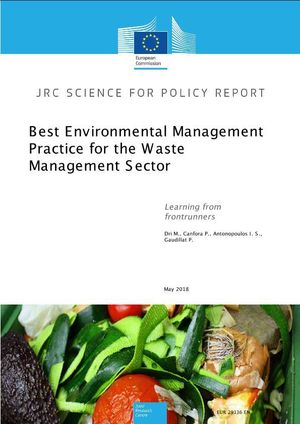The European Commission's Joint Research Centre published a report on Best Environmental Management Practice for the Waste Management Sector. The main purpose of the report, released in May 2018, is to assist local authorities and waste management companies move towards circular economy.
The report describes a set of best practices called Best Environmental Management Practices (BEMPs). The BEMPs cover the areas which are important for the overall waste management performance: establishing a waste management strategy, promoting waste prevention, promoting the reuse of products and preparation of waste for reuse; waste treatment, limited to operations enabling material recycling. Certain areas of waste treatment are also covered. In addition, the document provides a set of environmental performance indicators that organisations can use to assess their waste management performance.
The report addresses three waste streams:
- municipal solid waste (MSW): household waste and waste from other sources, such as retail, administration, education, health services, accommodation and food services, and other services and activities, which are similar in nature and composition to waste from households;
- construction and demolition waste (CDW); and
- healthcare waste (HCW).

The content of the document is presented in seven chapters. The first chapter explains the scope of the report followed by a chapter on environmental performance indicators that can be used to describe the overall performance of a municipal waste management system as well as several benchmarks. Chapters 3 - 6 describe the identified best practices, together with the associated indicators and benchmarks, and cross-cutting best practices that apply to all the waste streams covered in the document. Chapter 4 presents how waste authorities and waste management companies can best manage municipal solid waste, including the design of the waste management strategy, waste prevention, product reuse and preparation of waste for reuse, waste collection and waste treatment operations. The chapter also includes a BEMP addressing producer responsibility organisations. Chapters 5 and 6 focus on the activities of waste authorities and waste management companies responsible for the management of CDW and HCW. In the concluding chapter a summary of the main results of the report is provided: common environmental performance indicators for municipal solid waste management and the corresponding benchmarks; best environmental management practices and the associated BEMP-specific indicators and benchmarks.
The BEMPs presented in the report and the wealth of additional information can serve as inspiration and guidance to organisations and public authorities dealing with waste management.









